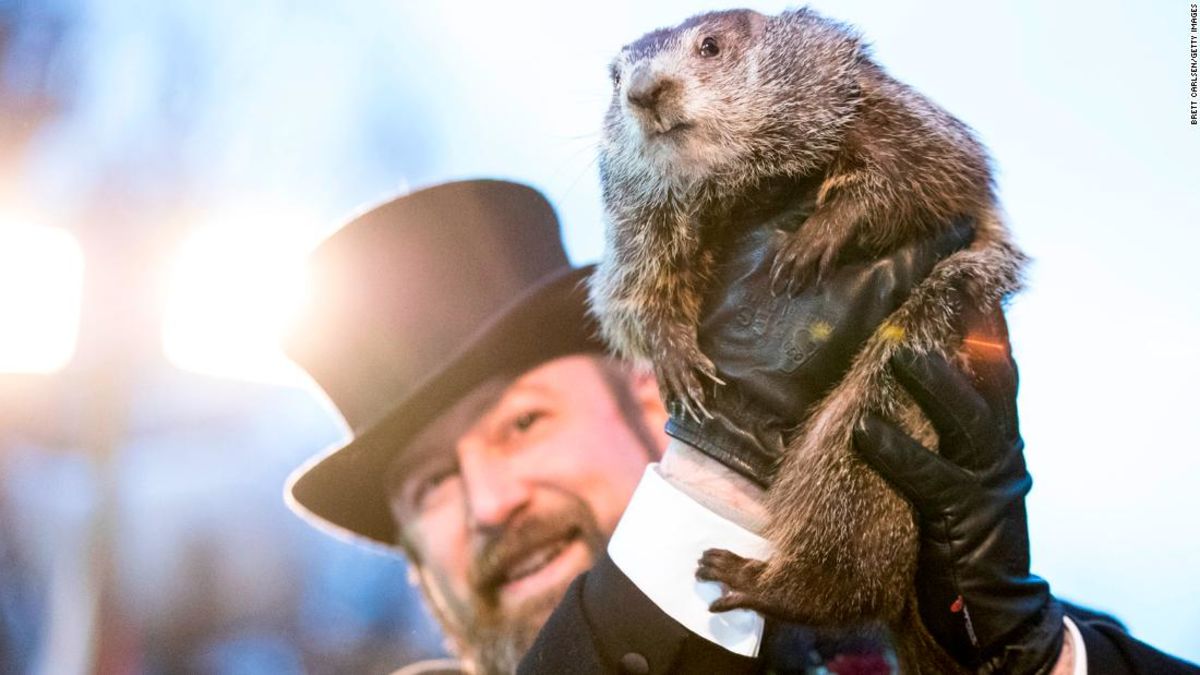
(CNN) — Punxsutawney Phil predicts spring will come early. Don't get too excited, though -- he's usually wrong.
Thousands of people gathered Saturday at Gobbler's Knob in Punxsutawney, Pennsylvania, to watch the famous groundhog emerge from his burrow and deliver his highly anticipated forecast.
As the legend goes, if Phil sees his shadow, he considers it an "omen" of six more weeks of bad weather and heads back into his hole. If it's cloudy and he doesn't, you can put away that winter coat sooner than expected.
The groundhog doesn't have the best track record
It's a Groundhog Day tradition that stretches back more than a century. But even though Phil has been in the weather-prediction business for more than 130 years, he doesn't have a stellar track record.
To be fair, it's a pretty tough job. Trying to predict a month and a half of weather for a country with vastly different regional climates is no small feat. Still, you think he'd have the hang of it by now.
"You're better off trying to decide what the rest of February and March will look like by flipping a coin," CNN meteorologist Judson Jones said.
But the people who know Phil best don't exactly see it that way.
A.J. Dereume, one of the groundhog's handlers, insists Phil's predictions have a 100% accuracy rate -- they just get lost in translation.
"Phil is the one deciding whether or not he's seen the shadow," Dereume says. "It's not up to us. All we do is deliver his message."
Either way, human forecasters don't mind having the alternate prediction out there in case their own projections go askew.
"People like to have something to blame for the weather, and the groundhog is the perfect thing to blame," Jones said. "It's better than blaming your meteorologist."
Why a groundhog makes weather predictions
So, why do Americans look to a groundhog for a weather forecast?
The tradition has its roots in a Christian religious holiday called Candlemas Day, dating back to ancient times. It was celebrated midway between the winter solstice and the spring equinox.
Over time, the tradition evolved to incorporate weather. A sunny sky on February 2, superstition held, would mean a cold and stormy remainder of winter, while a cloudy sky meant a quicker warm-up.
When the tradition spread to Germany, a hedgehog -- and its shadow sightings -- joined the mix. And when German settlers arrived in the colonial America, they relied on the more plentiful groundhog to do the work.
Fast-forward to 1887, when an editor of a Punxsutawney newspaper declared Phil America's official weather-predicting groundhog. Newspapers across the country picked up the story, and the tradition caught on.
The ongoing polar vortex
We now know Phil's prediction -- but we also have our doubts. So, what do the experts say the next month or so will actually feel like?
As for the rest of winter, temperatures over the next six weeks look about average -- if not below average in most of the country, Jones said, nodding in the direction of a bit more winter.
from CNN.com - RSS Channel https://cnn.it/2Tr4TCHBagikan Berita Ini















0 Response to "The groundhog has spoken"
Post a Comment